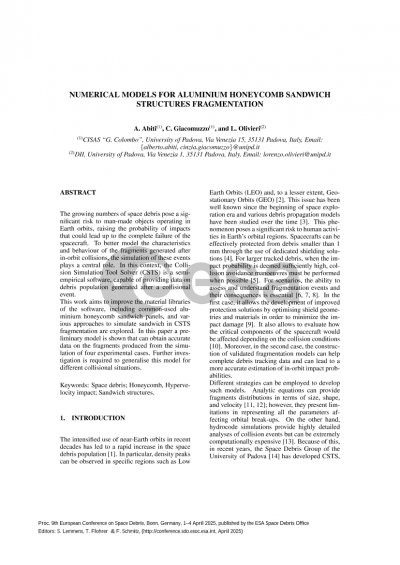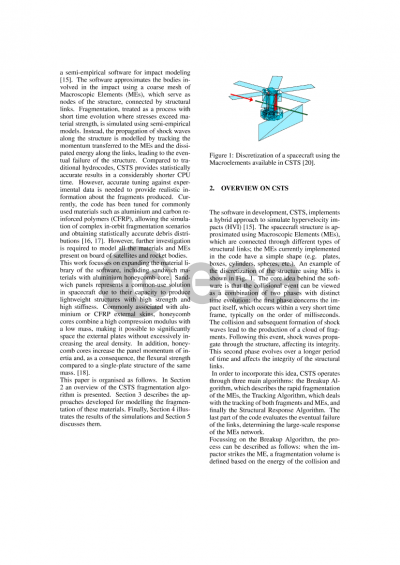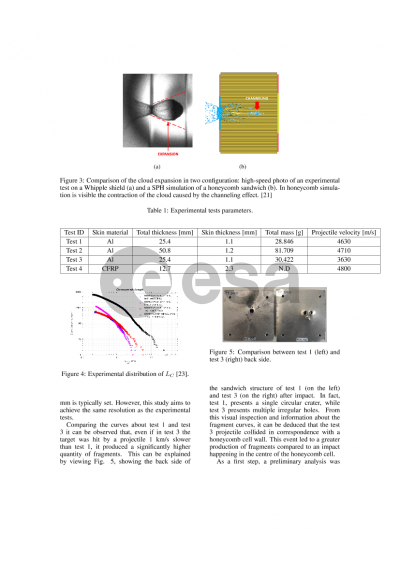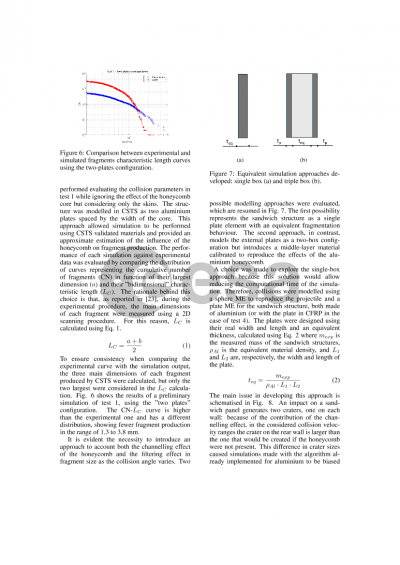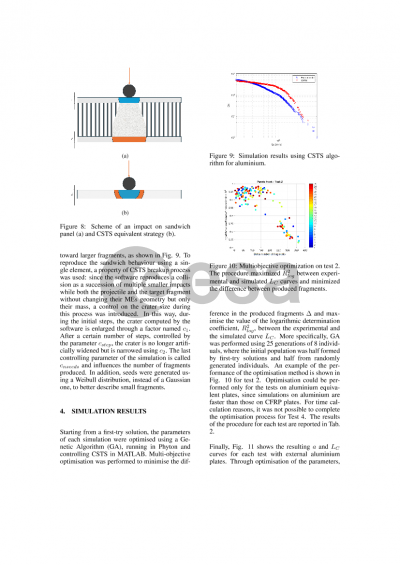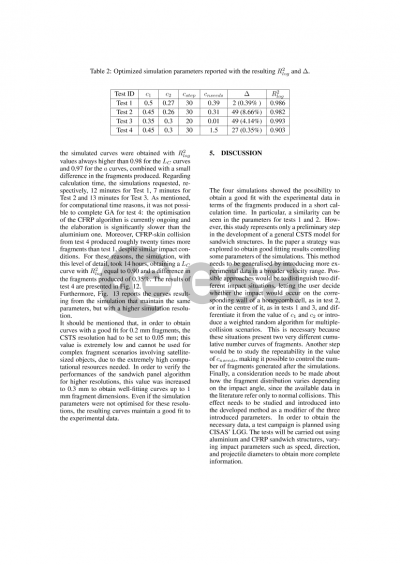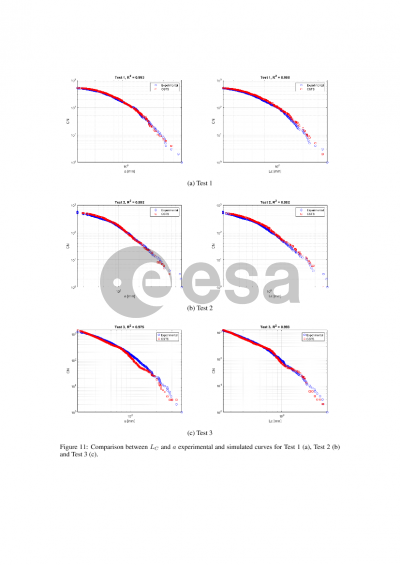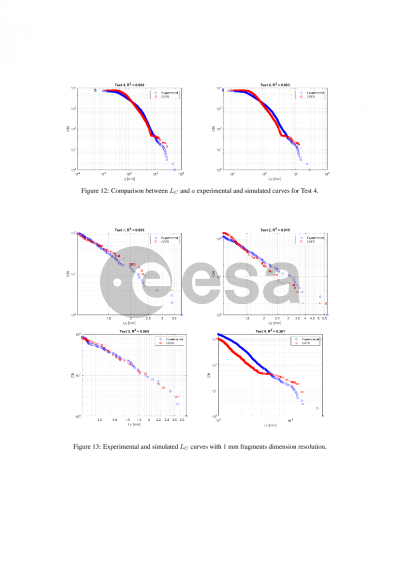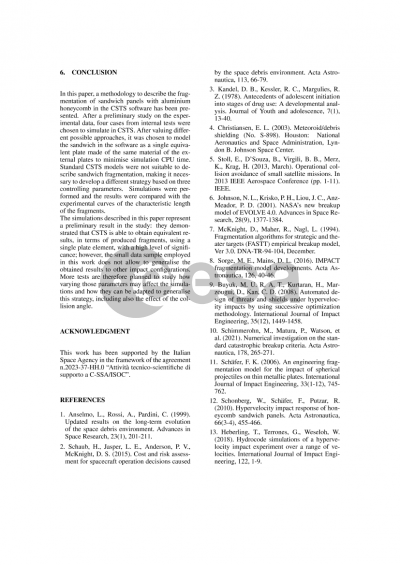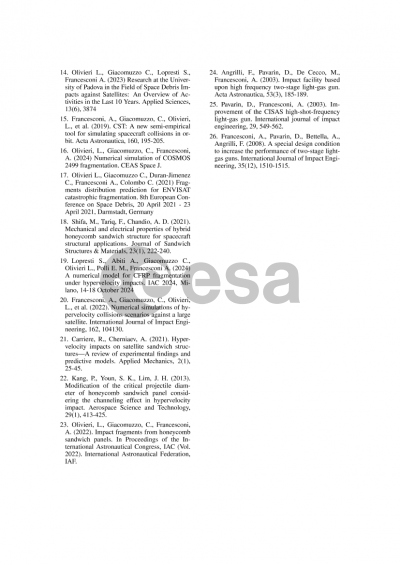Document details

Abstract
The growing numbers of space debris population poses a significant risk to man-made objects operating in Earth orbits, raising the probability of catastrophic impacts that could lead to the complete failure of spacecraft. To better model the characteristics and the behavior of the fragments generated after in-orbit collisions, the simulation of these events has a central role. In this context, the Collision Simulation Tool Solver (CSTS) is a semi-empirical simulation tool, developed in the framework of ESA and ASI contracts, capable of providing data on debris population generated after a collisional event. The software models the bodies involved in the impact using a coarse mesh of macroscopic elements (MEs), which serve as nodes of the structure, connected by structural links. Fragmentation, treated as a process with short time evolution where stresses exceed material strength, is simulated using semi-empirical models. Instead, shock waves propagation along the structure is modeled by tracking the momentum transferred to MEs and the dissipated energy along the links, leading to the eventual structure’s failure. In contrast with traditional hydrocodes, CSTS is able to provide statistically accurate results in a considerably shorter CPUs time.
This work aims to improve the material libraries currently implemented in CSTS, concentrating on aluminum honeycomb sandwich panels. These panels are widely used in the space industry due to their high strength and low density. However, despite their wide use, the physics behind their fragmentation is complex and not yet fully understood. The objective of this study is to develop a fragmentation model for aluminum honeycomb, capable of relating the number and characteristics of the generated fragments to the impact conditions and geometrical parameters, and to implement it in the CSTS software, validating the obtained debris cloud against experimental data. The study will use data from literature and from experimental activities conducted by CISAS research center over the past years, utilizing the hypervelocity facility of the University of Padova.
Preview
